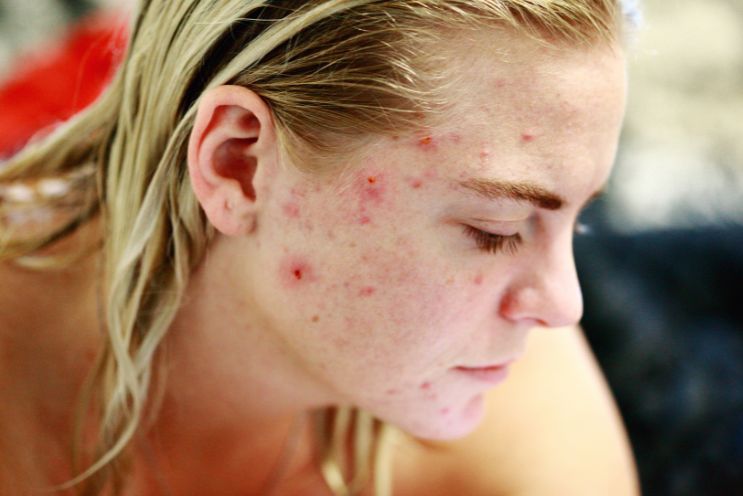Table of Contents
ToggleOverview
Clear skin isn’t easy if you don’t know what’s causing your bumps. Check out our guide to folliculitis-the skin condition you never knew you probably have.
When it comes to your body’s largest organ, it is important to take extra care to ensure it is healthy. Your skin not only serves as a protective layer for your organs, it also can heal itself, regulate your body temperature and even grow hair.
Keeping your skin healthy can mean more than just eating a healthy diet and staying hydrated. Achieving a clear complexion is not easy if you don’t understand the reasons for your skin woes.
While often mistaken for acne, folliculitis is a common skin ailment that is characterized by red or flesh colored bumps that can ‘pop-up’ almost anywhere on your body. Finding the root cause of this pesky skin problem is key to finding the correct skin clearing solution. We asked our resident folliculitis expert, Dr. Honaker to help us understand the cause of this common skin condition.
What is Folliculitis?
Folliculitis is characterized by small red or flesh colored bumps that can appear on your scalp, face, neck, chest, back, bikini area, underarms and upper arms. Basically anywhere that you can grow hair (even if it is too light to see) you can get folliculitis.
The reason for this is that folliculitis is actually the inflammation of your hair follicle. Often this is secondary to infection. The reason for the inflammation varies depending on the type of folliculitis you have, although most types stem from damage to the hair follicle.
How do Hair Follicles Become Damaged?
Hair follicles can become damaged easily through the actions we take everyday. Becoming aware of the activities that can cause damage to your hair follicles can help to stem the recurrence of folliculitis, although some damage to hair follicles is inevitable. Here are the common activities that can cause damage leading to folliculitis:
On your scalp:
Pimple like bumps on the scalp that hurt can appear due to
- Rubbing or scratching your head
- Wearing your hair in tight hairstyles such as ponytails or buns
- Pulling your hair
- Wearing sports helmets frequently
- Wearing hats often
- Infrequent hair washing leads to a build-up of product on the scalp
- Shaving your head
On your body:
- Wearing tight clothing
- Shaving/waxing/epilating your body hair
- Friction on your skin
- Wearing clothing that traps heat and sweat such as rubber gloves
Hot Tub Folliculitis
Hot Tub Folliculitis (pseudomonas folliculitis) is caused by bacteria that tend to live in warm wet areas called Pseudomonas aeruginosa. This bacteria is unfortunately not easy to kill off and can even thrive in chlorinated water. This is why this type of folliculitis is often called ‘hot tub’ folliculitis.
Although happiest in wooden tubs, this type of bacteria can live in hot tubs, spas, jacuzzis and even heated pools.
When warm bodies of water are not properly maintained this type of bacteria is able to thrive and if able to penetrate the hair follicle, folliculitis will appear within 24-48 hours.
How to Prevent Hot Tub Folliculitis
- Make sure that you are only using well-maintained hot tubs/pools/jacuzzis-ask the attendant how often the water levels are checked. Twice a day is ideal
- Do not remove hair 24 hours before soaking or swimming (if possible)
- Shower with soap after exiting the pool or tub
- Do not sit around in a wet bathing suit
- Wash your bathing suit thoroughly after each use
Who are at Risk in Folliculitis
While folliculitis can happen to anyone (certain types occur in infants) there are things that put people at an increased risk:
- Men who hair curly or thick hair
- Persons with compromised immune systems from conditions such as diabetes, HIV or certain types of cancer
- People who suffer from acne or dermatitis (easier to penetrate the skin)
- People who have recently shaved/waxed/epilated their body hair can cause folliculitis on stomach
Eosinophilic Folliculitis
While most types of Folliculitis occur when hair follicles are damaged by an external factor (shaving, friction) there is a rarer type of folliculitis caused by internal changes in the body. The exact reason for these changes are not known and the lesions caused by this type of folliculitis are not confined to the hair follicle.
This type of folliculitis is often associated with a suppressed immune system. Many people who suffer from HIV and AIDS will have these types of lesions on their face. This type of folliculosis can also affect babies and those with normal immune system function.
Razor Bumps (pseudofolliculitis barbae)
One of the most common causes of folliculitis is improper shaving methods. When you are not shaving properly, you are putting yourself at risk for ingrown hair. Ingrown hair occurs when the hair fails to grow out of the skin and instead grows into it. Men with thick and curly hair are especially at risk for this type of folliculitis. Shaving can lead to pimples on leg or pimple-like bumps on the buttock, depending on the regions that you shave.
The best way to prevent these bumps is to use proper shaving methods.
Check out our 11 ways to easily banish razor burn to help keep your skin silky smooth.
What Causes the Inflammation?
Once the hair follicle is compromised, there is a wide variety of bacteria, fungi and viruses that can infect the skin. One common culprit is Staphylococcus aureus a bacteria that normal lives on the skin, but can cause inflammation if able to penetrate it. Pityrosporum folliculitis is caused by a yeast infection and can produce bumps filled with pus.
Treatment for Folliculitis
Luckily, despite the many different causes and types of folliculitis, most types are able to clear up without medical intervention in about a week. In many cases, simply stopping the behavior that caused the damage to the hair follicle and allowing the area to heal is enough to stop the cycle.
If you suspect that you have folliculitis,or white pus bumps after using Brazilian wax you can encourage healing by:
- Washing daily with a mild antibacterial soap
- Showering immediately after swimming, soaking and sweating
- Applying a warm compress to the area
- Using shampoo with antifungal ingredients, such as tea tree oil
- Do not share towels, razors or face cloths
- Do not pick or ‘pop’ the bumps
- Apply topical antibiotic cream to the area
- Avoid shaving the area
You May Need a Doctor if:
- After a few days of treatment, your folliculitis is not getting better or spreading
- The area becomes warm, red, and painful to the touch
- You feel generally unwell
- You have a fever above 100°F (38°C)
When to Consult a Doctor
Getting face time with a doctor is not always easy. Busy schedules, crowded waiting rooms and high costs can cause our health to be put on the back burner. Luckily there is a new way of helping people around the world make their health a priority-Your Doctors Online.
Simply download our free app and you can connect with a doctor. Imagine putting your mind at ease and getting sound medical advice without leaving the comfort of your own home. Try us for free today.







